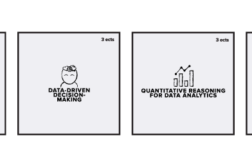This text is based on the pyramid of Human capabilities by Gary Hamel, and it offers a perspective on how to set goals for passion-based operations.
A student selects a school, a course, or a module, in which they invest their time and effort.
On the lowest level, students are obedient; they set their standard on attending a course and passing it with adequate criteria. They participate when necessary but do not pour extra effort into a course. Albeit, the students produce material that meets the assessment criteria.
On the second-lowest level, students are diligent; they produce material efficiently and use time and resources to create the assessments. Students make the material that can is seen as improved when comparing to the first level.
The third level goes into the expertise level – The students begin to take ownership of their work and start managing the learning process per the assignment criteria. Teachers start turning from managers to coaches, that are there to help students when they face a tricky situation or need sparring with their work. A process of co-creation is starting to appear.
The students take the whole initiative; they set the tone for the project work and operate autonomously. They are proactive in solving the case provided to them and seek solutions actively. Teachers move from coaching to mentoring, assisting where needed.
The fifth level sees the rise of creativity with the students. Operations are not bound to the limits of the preliminary assessment, but the borders as seen more as a guideline for the work. Creativity fuels the working, and students have control in their work and creating new within the assessment. The students operate so that they gain expertise and actively seek more information to support their growth. Teachers are enablers, mentors if so, for the newly-risen student co-creator colleagues.
Finally, we enter the sixth, passion-based level. Now students are in control. Teachers operate so that their work provides the students freedom and resources, giving the passion a construct in the learning environment.
Conclusion
Now, there is significant importance on the interactions with the student and the teaching staff, which also impacts the capability of a single student. By no means can the environment be overruled when discussing the passion in learning, but the emphasis should also be with the student – is a student setting the goal for themselves to be a passion-based learner. Being passion-based also requires support from the environment, so the teaching staff should also be ready to take on the task of supporting and encouraging students to be passionate about their learning.
So, being passion-based can be seen as reachable for everyone willing to aim to achieve them and constantly being interested in leading the change in a supportive and inclusive environment!
Have a great start to your passion-based studies!



